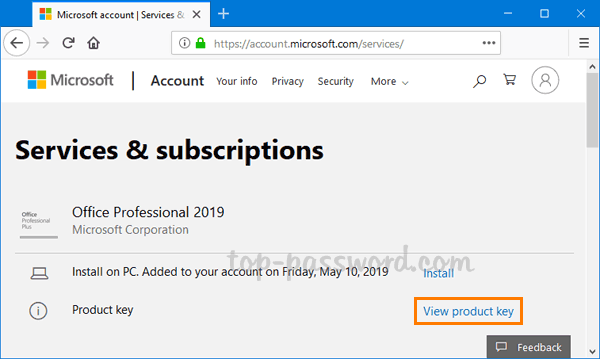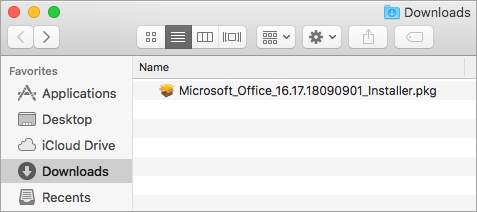Today we mark the end of support for Office 2010 and Office 2016 for Mac. This means that we’ll no longer provide technical support, bug fixes, or security updates for these products, and organizations that continue to use them may face increased security risks and compliance issues over time. The requirements for connecting to Office 365 services have also changed—and customers will now need Microsoft 365 Apps, Office 2019, or Office 2016 to connect to Office 365 services like Exchange Online and SharePoint Online. While we will not take any active measures to block legacy versions of the Office client from connecting, these older clients will fall out of step with the service enhancements and may present performance and/or reliability issues over time.
As we first announced back in April 2017, this decision aligns with our broader commitment to providing tools and experiences designed for a new world of work. If this year has taught us anything, it’s that we need to help our customers stay agile and connected despite constant change. And that means delivering cloud-connected and always up-to-date versions of our most valuable apps to every person and every organization on the planet. With Microsoft 365 Apps, we do that in three big ways. First, the cloud enables real-time collaboration across apps and within Microsoft Teams, the hub for teamwork. Second, AI and machine learning advance creativity and innovation in everything from PowerPoint design to Excel analysis. And finally, built-in, cloud-powered security protects your data and provides the peace of mind that comes with knowing your business will not only be productive, but also secured.
Microsoft Office 2016 For Mac Multiple Computers Windows 7
We understand that everyone is at a different stage of their journey to the cloud, and we’re committed to supporting our customers throughout their transition to Microsoft 365 Apps. For those customers who aren’t ready for the cloud and have a specific need for on-premises or hybrid deployment, such as fully disconnected or restricted environments, we offer Office 2019, the perpetual version of Office that does not receive feature updates. But for everyone else, we’ve created a set of resources to help you transition to the Microsoft 365 Apps and innovations designed to help keep your environment up to date once you’ve made the transition.
Resources for transitioning to Microsoft 365 Apps
It depends on the license you have/will purchase(d) from Microsoft. From Microsoft website — Microsoft Office 2019 Office 365 Office Home & Business 2019 (One time purchase) — Devices per license — 1 PC or Mac Office 365 Business(annual commitme. OneNote for Mac 2016 - different interface on two computers I have Office 2016 for Mac on an Office 365 subscription, on two computers, an iMac and a MacBook Pro. Both are running fully up-to-date versions of MacOS Sierra (version 10.12.2).
Transitioning to the always up-to-date Microsoft 365 Apps has never been easier. Here’s a list of resources available to help.
- The Office 2010 end of support roadmap is a great place to start your migration, walking you through the steps you’ll need to take and the resources available at each stage.
- The Deployment Guide for Microsoft 365 Apps provides the most up-to-date deployment and servicing guidance, including guidance on how to use the Readiness Toolkit to help you identify compatibility issues with Office add-ins and Microsoft Visual Basic for Applications (VBA) macros.
- For customers using Microsoft Endpoint Configuration Manager, the Microsoft 365 Apps upgrade readiness dashboard shows which devices in the environment are ready to upgrade to Microsoft 365 Apps, including add-in and macro compatibility.
- Research from more than 500 organizations demonstrates that customers who have taken the journey to Microsoft 365 are seeing productivity, security, and management benefits from the integrated solution. Download this eBook to learn more about their experiences, and the business impact they’ve seen to date.
- Microsoft FastTrack experts and the App Assure program are available for customers who need added assistance and can work with you to roll out Microsoft 365 Apps to your entire organization.
New resources to help keep your environment up to date
We also recently announced a host of innovations geared toward empowering people, teams, and organizations to thrive in the new world of work. Rolling out in the coming months, two of these—Office Inventory and Servicing Profile—will be especially helpful in keeping your environments up to date once you’ve transitioned to Microsoft 365 Apps.
- Office Inventory allows you to drill into detailed views of devices running Office apps in your environment. Use it to understand which Office client versions and Office add-ins are running as well as which servicing channel each device belongs to. Customers who are still transitioning to Microsoft 365 Apps can use this tool to understand where to target their efforts as they go.
- The new Servicing Profile feature helps streamline and automate Microsoft 365 Apps servicing, reducing the burden of manual deployments and accelerating the rollout of the latest productivity features and security patches without adding extra effort and costs. You can learn more about Office Inventory, Servicing Profile, and more new admin capabilities on the Office 365 Blog or by watching this session from Microsoft Ignite.
All of our customers are working hard to help their people stay productive, connected, and secure at a time of rapidly accelerated digital transformation. Microsoft 365—which includes Teams and Microsoft 365 Apps, along with tools like OneDrive for Business and built-in management, security and compliance—helps ensure your people can do their best work while also remaining secure. And we are committed to investing in Microsoft 365 for the long haul, delivering ever-improving experiences that empower individuals, teams, and organizations to achieve more today and in the days to come.
Today we mark the end of support for Office 2010 and Office 2016 for Mac. This means that we’ll no longer provide technical support, bug fixes, or security updates for these products, and organizations that continue to use them may face increased security risks and compliance issues over time. The requirements for connecting to Office 365 services have also changed—and customers will now need Microsoft 365 Apps, Office 2019, or Office 2016 to connect to Office 365 services like Exchange Online and SharePoint Online. While we will not take any active measures to block legacy versions of the Office client from connecting, these older clients will fall out of step with the service enhancements and may present performance and/or reliability issues over time.
As we first announced back in April 2017, this decision aligns with our broader commitment to providing tools and experiences designed for a new world of work. If this year has taught us anything, it’s that we need to help our customers stay agile and connected despite constant change. And that means delivering cloud-connected and always up-to-date versions of our most valuable apps to every person and every organization on the planet. With Microsoft 365 Apps, we do that in three big ways. First, the cloud enables real-time collaboration across apps and within Microsoft Teams, the hub for teamwork. Second, AI and machine learning advance creativity and innovation in everything from PowerPoint design to Excel analysis. And finally, built-in, cloud-powered security protects your data and provides the peace of mind that comes with knowing your business will not only be productive, but also secured.
We understand that everyone is at a different stage of their journey to the cloud, and we’re committed to supporting our customers throughout their transition to Microsoft 365 Apps. For those customers who aren’t ready for the cloud and have a specific need for on-premises or hybrid deployment, such as fully disconnected or restricted environments, we offer Office 2019, the perpetual version of Office that does not receive feature updates. But for everyone else, we’ve created a set of resources to help you transition to the Microsoft 365 Apps and innovations designed to help keep your environment up to date once you’ve made the transition.
Resources for transitioning to Microsoft 365 Apps
Microsoft Office 2016 Download Mac
Transitioning to the always up-to-date Microsoft 365 Apps has never been easier. Here’s a list of resources available to help.
- The Office 2010 end of support roadmap is a great place to start your migration, walking you through the steps you’ll need to take and the resources available at each stage.
- The Deployment Guide for Microsoft 365 Apps provides the most up-to-date deployment and servicing guidance, including guidance on how to use the Readiness Toolkit to help you identify compatibility issues with Office add-ins and Microsoft Visual Basic for Applications (VBA) macros.
- For customers using Microsoft Endpoint Configuration Manager, the Microsoft 365 Apps upgrade readiness dashboard shows which devices in the environment are ready to upgrade to Microsoft 365 Apps, including add-in and macro compatibility.
- Research from more than 500 organizations demonstrates that customers who have taken the journey to Microsoft 365 are seeing productivity, security, and management benefits from the integrated solution. Download this eBook to learn more about their experiences, and the business impact they’ve seen to date.
- Microsoft FastTrack experts and the App Assure program are available for customers who need added assistance and can work with you to roll out Microsoft 365 Apps to your entire organization.

New resources to help keep your environment up to date
Microsoft Office For Mac 2016

We also recently announced a host of innovations geared toward empowering people, teams, and organizations to thrive in the new world of work. Rolling out in the coming months, two of these—Office Inventory and Servicing Profile—will be especially helpful in keeping your environments up to date once you’ve transitioned to Microsoft 365 Apps.
- Office Inventory allows you to drill into detailed views of devices running Office apps in your environment. Use it to understand which Office client versions and Office add-ins are running as well as which servicing channel each device belongs to. Customers who are still transitioning to Microsoft 365 Apps can use this tool to understand where to target their efforts as they go.
- The new Servicing Profile feature helps streamline and automate Microsoft 365 Apps servicing, reducing the burden of manual deployments and accelerating the rollout of the latest productivity features and security patches without adding extra effort and costs. You can learn more about Office Inventory, Servicing Profile, and more new admin capabilities on the Office 365 Blog or by watching this session from Microsoft Ignite.

All of our customers are working hard to help their people stay productive, connected, and secure at a time of rapidly accelerated digital transformation. Microsoft 365—which includes Teams and Microsoft 365 Apps, along with tools like OneDrive for Business and built-in management, security and compliance—helps ensure your people can do their best work while also remaining secure. And we are committed to investing in Microsoft 365 for the long haul, delivering ever-improving experiences that empower individuals, teams, and organizations to achieve more today and in the days to come.